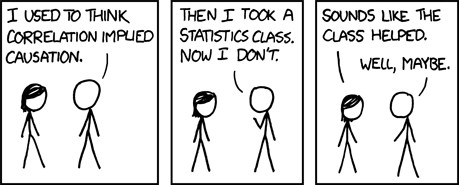I get a lot of judgment from Americans when I tell them I ride motorcycles. "Isn't that dangerous?" they say, or the less sensitive ones: "I call them DONORcycles!" Everyone's an expert, keen on telling me why I should know better. They have a point. Motorcycling is intrinsically dangerous, sort of like having a pet dragon. As if the harsh elements to which you're exposed aren't enough (wind, weather, road hazards, bird poo), you're sharing the road with drivers who range from (frequently) inattentive to (often) disapproving to (rarely) downright hostile; even though I have a motorcycling license and a street-legal machine, I actually prefer riding off-road over dealing with oblivious soccer-moms, texting teenagers and road-raging rednecks - even though I'm more likely to encounter bears, snakes and curiously common printer-scanners distributed along the trail.

On-road or off, you have no roll cage, no airbag, no seatbelt, no radio, no air conditioning, and usually no ABS or traction control (no girlfriend either, because you probably talk about motorcycles too much). And you're sitting on this object which has a deep-rooted gravitational desire to tip over and dump you onto the pavement at 70mph. You must be bonkers.
It comes as no surprise that street motorcyclists are killed about 21 times more than car drivers per mile traveled. Given the sample size (the entire motoring population of the USA), you don't need to be Nate Silver to know that's about as significant as statistics get. Any normal person would conclude, therefore, that they raise their chances of dying in a traffic accident by a factor of 21 simply by riding a motorcycle. Thankfully, we are not normal people; we are budding econometricians, and any nerd worth her salt should spot the error here.
In ecospeak we could call it "omitted-variable bias" but you may be more familiar with the umbrella adage "correlation does not imply causation."
Basically, the normal person has assumed that the mere act of riding a motorcycle, holding all other factors constant, raises his chances of dying in a traffic accident by 21 fold. However, there are many factors correlated with motorcycling which are not caused by it and these could lead to crashes (for example, riding at excessive speed or forgoing proper training). Sure enough, we see these additional factors reflected in the traffic safety data - "37% of motorcyclists involved in fatal crashes were speeding, compared with 23% for passenger car drivers." A quarter of motorcyclists in fatal crashes were riding without licenses, compared with 13% of car drivers. Motorcyclists involved in fatal accidents are also much more likely to be alcohol-impaired than car and truck drivers.
What this tells us: riding isn't necessarily much more dangerous than driving a car. The people who ride motorcycles tend to be risk-seekers and their bad decisions have damaged the motorcycle's reputation by association. This is self-reinforcing; as riding becomes perceived as more dangerous, more risk-seeking people choose to get in on it and make it even more apparently dangerous on the whole.
This causal distinction is crucial for two reasons: 1) If we control for these variables (speeding, DUI, etc.), we get a more accurate picture of how dangerous riding is and 2) Recognizing the impact of these variables encourages motorcyclists to manage their risks more effectively (e.g. wearing proper gear, obeying traffic laws, riding sober, etc.). You can have a lot of fun on a motorbike, even if you don't chug beers and fly down the highway at 100mph with your front wheel up in the air (that's known as being a "Squid").
How big of a difference do these factors make? The (unfortunately titled) Hurt Report (full text here, summary here) contains a lot of data pertaining to the causes of motorcycle accidents. The report is old (1976-'77) and limited in scope (City of Los Angeles and the surrounding rural areas) but its findings are still applicable in determining and mitigating causes of crashes. Wear gear, ride sober and take a motorcycling safety course and you've gone a long way toward reducing your risk.
It's great than the government has budgeted so much for highway safety research - approximately $815m per year. But I find it surprising that nobody, even with the charitable help of the AMA, can cough up just $8m to repeat the Hurt study in a modern, broader setting. It could save a lot of lives.
I think I have a pretty good idea why motorcycle safety is so low on the public's priority list: The perception is that motorcycling is inherently, necessarily incredibly dangerous. So dangerous, in fact, that it seems like nothing can be done to mitigate its risks. People assume that motorcyclists have forfeited the right to government assistance in assessing and managing their risks effectively. This is a judgmental approach - we should focus on what we can do to educate people about their choices using science and reason, rather than writing them off as a group of hooligans who have given up on living.
If you're interested in specifics about motorcycling safety, I recommend Proficient Motorcycling by David L. Hough and its sequel. Total Control by Lee Parks is another book on riding, more specifically geared toward technique.
There is risk in everything. I feel - quite strongly - that people should be allowed (indeed, encouraged) to choose their risks and to take responsibility for the outcome. But if I - as a motorist, taxpayer, lawmaker, whatever - can help people identify and minimize their risks through education, I believe those tax dollars are well spent.


